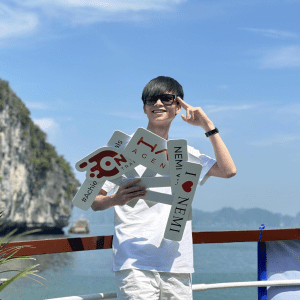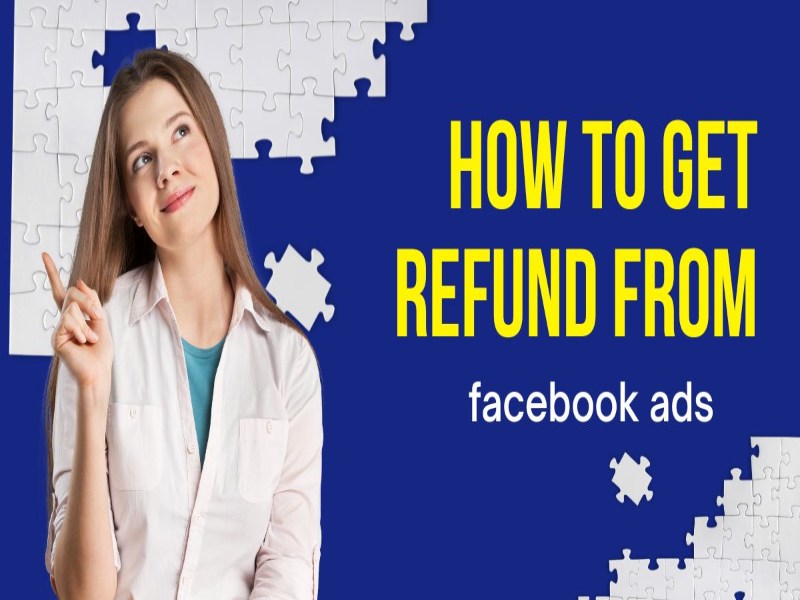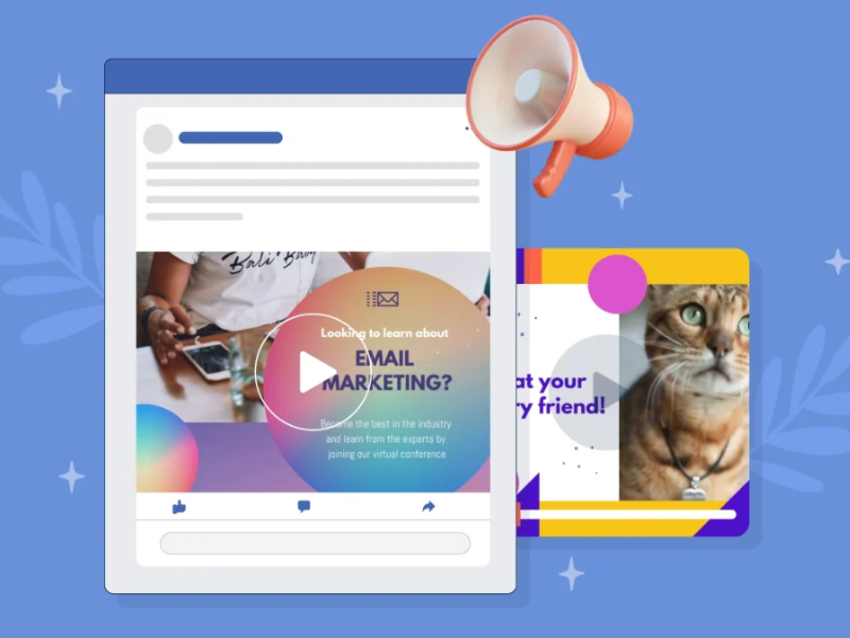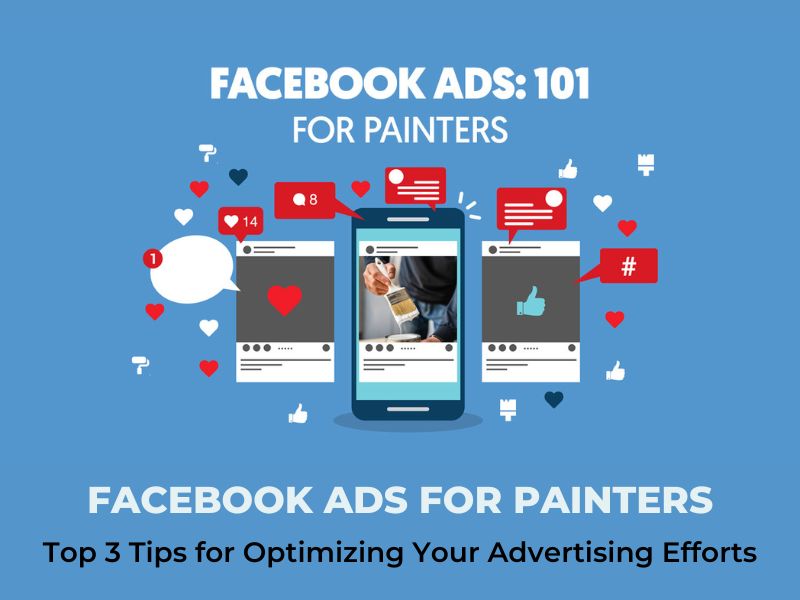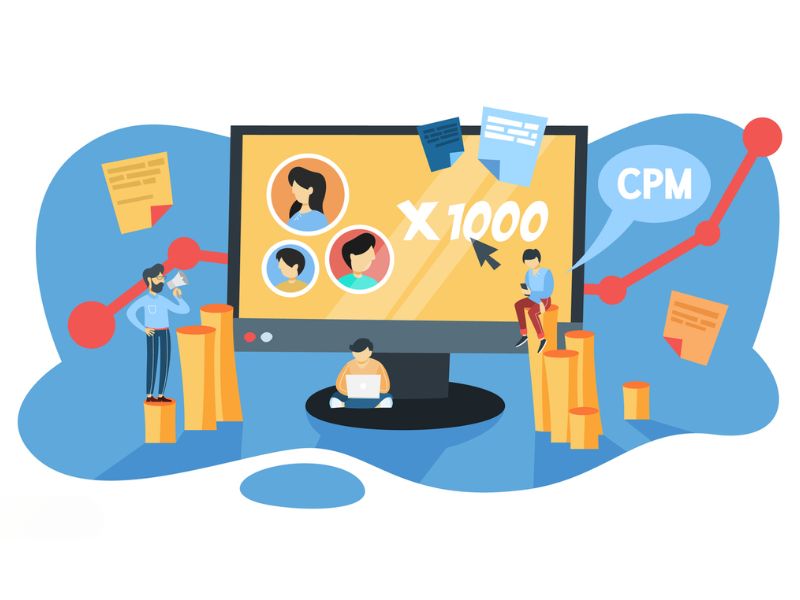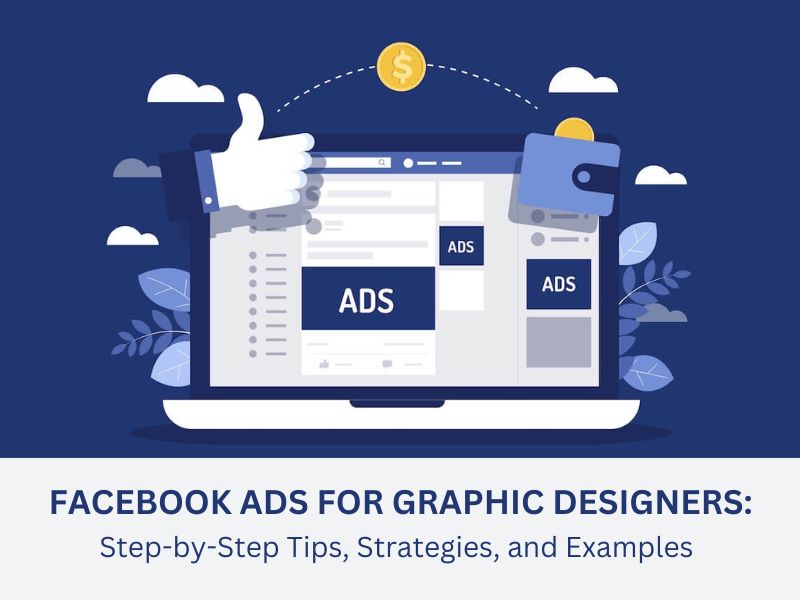Facebook offers one of the most powerful advertising platforms in the world. But if you’re new to digital marketing, you may be wondering: How do Facebook Ads work? And more importantly, how can you use them to grow your business?
This beginner-friendly guide will walk you through everything you need to know—from how Facebook Ads are delivered and priced to how to create, optimize, and track high-converting ad campaigns.
How do Facebook Ads work?
Facebook Ads operate on an auction-based system, where advertisers compete to show their ads to specific audiences. The platform uses artificial intelligence to determine when and where your ad appears, based on three main factors:
- Bid amount – How much you’re willing to pay.
- Estimated action rates – How likely the user is to engage.
- Ad quality – Based on user feedback and relevance.
However, for this system to work effectively, audience targeting, ad placement, and campaign optimization all play key roles. The more aligned your ad is with your target audience’s interests and behaviors, the better your chances of winning the auction and achieving lower ad costs.
Let’s break down how each part of the system works to help you create more effective ad campaigns.
Audience Targeting
Facebook excels at micro-targeting. Its targeting system is one of the most advanced in the digital advertising world. It allows advertisers to reach users who closely match their ideal customer profile, reaching users based on:
- Age, gender, and location
- Interests and hobbies
- Online behavior and engagement
- Website visits (via the Meta Pixel)
This makes it possible to reach highly specific audiences, increasing conversion potential and ad relevance. If you’re wondering how do Facebook Ads work in terms of targeting, this section reveals just how granular Facebook’s data can be.
Ad Placement
Your ads can appear in up to 19 different placements across platforms like Facebook, Instagram, Messenger, and Audience Network. Key placements include:
| Platform | Placement | Description |
| News Feed | Appears in the main feed like a regular post. | |
| Right Column | Desktop-only, appears on the right side of the screen. | |
| Instant Articles | Ads within fast-loading news content. | |
| In-Stream Video | Shown before, during, or after video content. | |
| Stories | Full-screen vertical ads between Stories. | |
| Marketplace | Appears on the Marketplace homepage. | |
| Groups | Shown in Facebook Groups. | |
| Events | Listed within event suggestions. | |
| Search Results | May appear when users search – not always visible. | |
| Feed | Shows in users’ main Instagram feed. | |
| Stories | Full-screen ads between user Stories. | |
| Explore | Appears while browsing the Instagram Explore tab. | |
| Messenger | Inbox | Appears in the main inbox tab. |
| Sponsored Messages | Delivered as messages (great for retargeting). | |
| Audience Network | In-Stream Video | Plays in videos on third-party apps/sites. |
| Interstitial | Full-screen ads between content transitions. | |
| Rewarded Video | Watch-to-earn ads, common in games/apps. | |
| Native | Seamless ads styled like app content. | |
| Banner | Static banners at top or bottom of pages. |
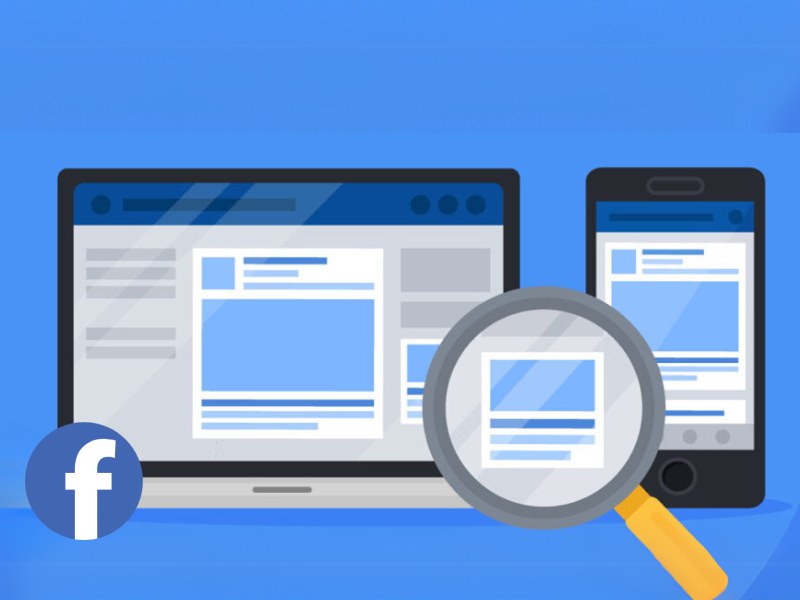
Facebook’s Ad Ranking System
Facebook uses an auction system to decide which ads get shown and in what order. Each ad is assigned a total value score, calculated from:
- Advertiser Bid – This is how much you’re willing to pay for your desired outcome (like clicks, impressions, or conversions). A higher bid can increase your chances of winning ad placements, but it’s not the only thing that matters.
- Estimated Action Rate – This reflects how likely a person is to take the action you’re optimizing for — such as clicking, watching a video, or making a purchase. Facebook predicts this based on past behavior and ad context.
- Ad Quality – This measures how relevant and high-quality your ad is compared to others competing for the same audience.
According to the Quality Ranking | Meta Business Help Center, Quality Ranking is influenced by User feedback (positive or negative), engagement rates, how relevant your ad is to the audience and ads with higher quality rankings tend to perform better and cost less.
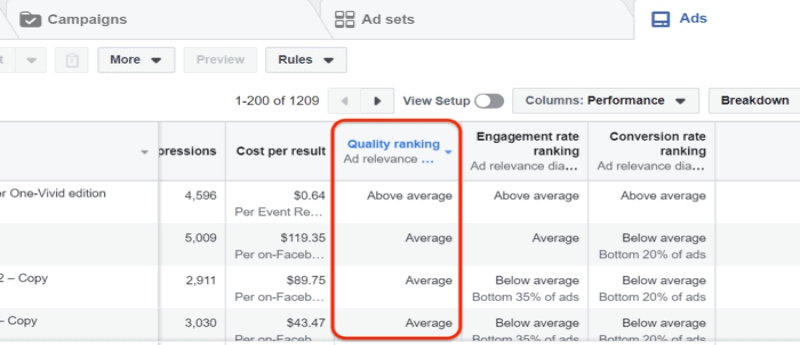
In Meta’s internal document Deep Dive: How to build the Facebook Ads Ranking System, it’s confirmed that the ad auction prioritizes the likelihood of user engagement (such as a click or conversion), the bid value and the predicted quality of the ad experience.
How Facebook Charges Advertisers
Facebook offers flexible pricing models:
- CPC (Cost Per Click) – Pay when someone clicks your ad.
- CPM (Cost Per Mille) – Pay per 1,000 impressions.
- CPA (Cost Per Action) – Pay when a specific action (e.g., sign-up or purchase) is completed.
Your total spend depends on audience targeting, competition, and ad relevance.
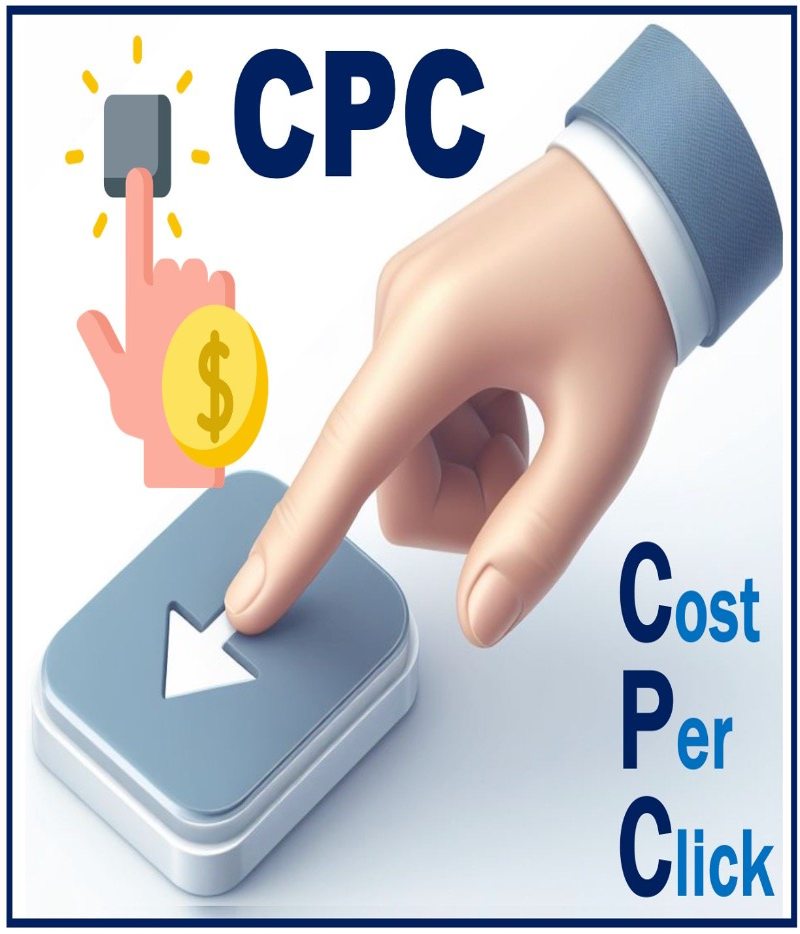
Getting Started with Facebook Ads
The foundation of every Facebook ad campaign is Facebook Ads Manager, the centralized tool for managing ads, tracking performance, and optimizing results. Here’s the basic process to get started:
Set Up Your Facebook Ads Manager Account
Start by creating a Business Manager account via Facebook Business. This platform allows you to:
- Manage pages, ad accounts, and team access.
- Set up your payment method.
- Access insights and reporting tools.
Pro Tip: Set up two-factor authentication for better account security.
Understand Your Ad Objectives and Goals
Facebook Ads start with choosing your campaign objective. Each objective is tied to a specific business goal:
- Brand Awareness: Reach people more likely to recall your brand.
- Traffic: Drive clicks to your website or app.
- Engagement: Boost likes, comments, and shares.
- Leads: Collect sign-ups through lead forms or Messenger.
- Conversions: Drive actions on your website like purchases.
- App Installs: Promote app downloads.
- Sales: Focus on product or catalog sales using dynamic ads.
Choosing the right objective helps Facebook’s algorithm optimize delivery to the people most likely to take your desired action.
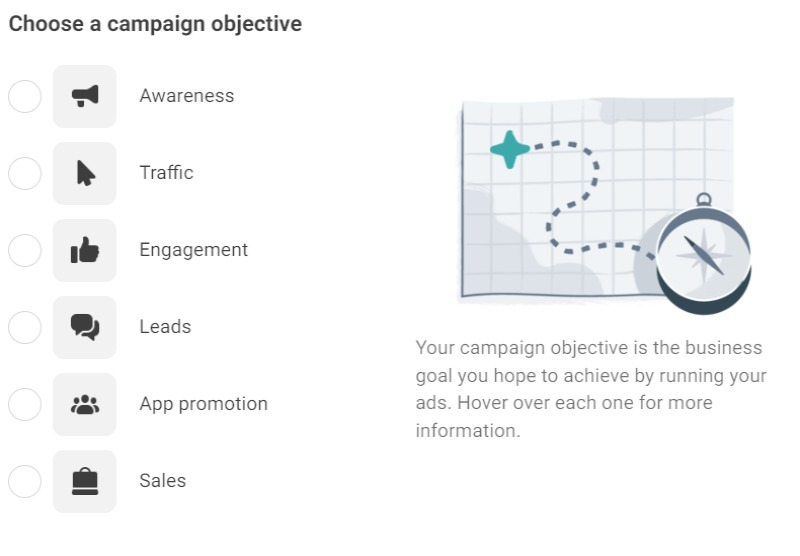
Choose Your Campaign Type
Your creative format plays a major role in campaign performance. Facebook offers several ad types:
- Image Ads: Simple, single-photo ads. Great for highlighting a product or brand. Example: A clothing brand showcasing a new collection.
- Video Ads: Engage your audience with motion. Perfect for storytelling or product demos. Example: A travel agency featuring scenic destinations.
- Carousel Ads: Showcase up to 10 images or videos, each with its own link.
Example: A restaurant highlighting multiple menu items.
Choose ad types based on your campaign objective, content strategy, and what resonates with your audience.
How to Create Effective Facebook Ads
Define Your Target Audience
Audience targeting is the engine of Facebook Ads. The more specific your targeting, the better your ROI. Facebook gives you three key audience options:
- Core Audiences: Built using filters such as:
- Demographics: Age, gender, education level, relationship status
- Location: Country, city, radius-based targeting
- Interests: Hobbies, brands they like, activities (e.g., vegan cooking, fitness, tech gadgets)
- Behaviors: Purchase history, device usage, travel behavior
- Custom Audiences: Target people who have already interacted with your business:
- Uploaded email list
- Website visitors (via Facebook Pixel)
- App users
- Lookalike Audiences: Find new people who act like your best customers based on data from your Custom Audience.
For example: A high-end skincare brand could target:
- Women aged 25–45
- Interested in “natural skincare”, “Sephora”, “eco-friendly beauty”
- Using iOS devices in urban areas like LA or NYC
This approach ensures your business has conducted in-depth market research, ensuring every impression counts.
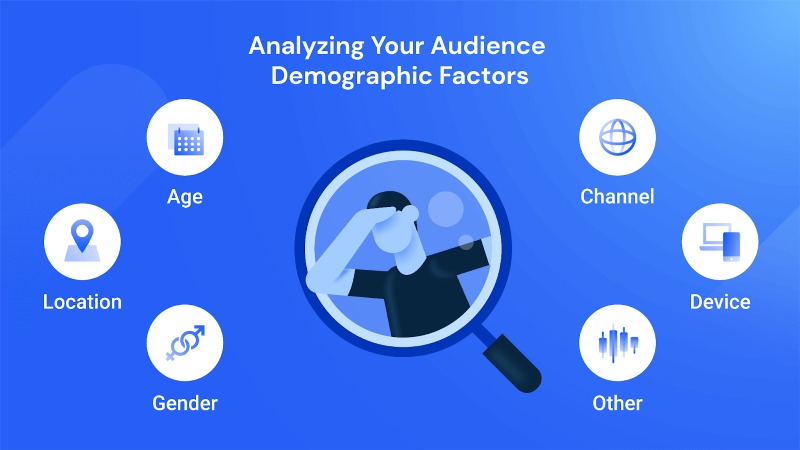
Set Your Budget and Bid Strategy
Facebook allows for flexible budgeting:
- Daily budget: Amount you’re willing to spend per day.
- Lifetime budget: Spend a fixed amount over a set date range. Better for short bursts or time-bound promotions.
Next, choose a bidding strategy:
- Automatic (recommended): Facebook adjusts your bids to get the best results for your budget.
- Manual: You control the max bid per action (e.g., $1.20 per click). Best for experienced marketers who know their CPA thresholds.
| NEMI Ads’ Expert Tips: If your goal is conversions, optimize for events like “Add to Cart” or “Purchase”, not just clicks. Facebook’s AI gets better results when optimizing deeper down the funnel. |
Choose Ad Placement and Format
Ads placements determine where your ads appear. You can go automatic or customize. Manual placement gives you better control over performance per platform.
- Platforms: Facebook, Instagram, Messenger, Audience Network
- Placements: News Feed, Stories, Reels, Right Column, In-Stream videos, and more
- Formats: Single Image, Carousel, Slideshow, Collection
Mobile-first design is key—most users view ads on their phones. In order to display your ads properly, it is recommended to follow the design guideline, as advised by many social marketers. UI/UX plays an important role in ads optimization.
| NEMI Ads’ Expert Tips: Use “pattern disruption” in visuals — bright colors, bold fonts, or surprising images to make users stop scrolling. |
Craft Compelling Ad Copy and Visuals
To stop the scroll, your ad needs to be attention-grabbing and action-oriented. Strong ads are a marriage of message and media.
Ad Copy Tips:
- Hook (first line): Draw users in. Example: “Tired of waking up with puffy eyes?”
- Value proposition: What’s in it for them? “Our lightweight eye cream is loved by users for its soothing, refreshing feel.”
- Social proof: Testimonials, ratings, or real results
- CTA: Clear action: “Try it risk-free today”
Visuals Tips:
- Use lifestyle imagery or real user-generated content
- Add overlays: price tags, discount badges, or urgency cues
- Keep brand consistency (colors, fonts)
It is recommended to test multiple versions of your ad creatives using A/B testing to find what resonates best.
How Much Do Facebook Ads Cost?
There’s no one-size-fits-all cost to Facebook Ads. Costs vary by industry, goal, and how competitive your audience is. Every time someone scrolls through Facebook or Instagram, an auction runs behind the scenes. Ads compete based on:
- Your bid (manual or auto)
- Estimated action rate (how likely a person is to engage or convert)
- Ad relevance and quality score
You don’t always need the highest bid to win! A high-quality, relevant ad can beat a more expensive one.
What affects your Facebook ads costs? Here are a few factors to consider when analyzing how do Facebook Ads work across different industries and budgets.
- Audience targeting: Narrow audiences = higher costs due to competition.
- Ad quality and relevance: Low CTR = higher CPC due to poor engagement.
- Competition in your industry: Finance and insurance have higher CPCs than fashion or beauty.
- Time of year (e.g., holidays, events): Costs usually spike during Q4 holidays, Black Friday, etc.
- Campaign objective: Conversion campaigns usually cost more than traffic or engagement.
Average CPC (Cost Per Click): ~$0.77 (varies by niche). With the average CPC, here’s a suggested budget by business size, based on NEMI Ads’ experience and campaigns we conducted for our clients worldwide:
|
Business Size |
Recommended Monthly Budget |
| Solo Entrepreneur | $300 – $700 (focus on testing + retargeting) |
| Small Business | $1,000 – $3,000 (multi-audience campaigns) |
| Medium Business | $3,000 – $10,000 (brand + performance mix) |
| Enterprise | $10,000+ (full-funnel automation & remarketing) |
Tips: Smart scaling strategy all SMEs should know:
- Start small: $10–$20/day for each audience
- Test creatives: Identify high-performers
- Scale fast: Increase budget by 20–30% every 3 days on winning ads
- Retarget: Visitors who clicked but didn’t convert.

Best Practices for Optimizing Facebook Ads
Creating your ad is only the beginning — continuous optimization is what drives performance and lowers cost per result. Here’s how to ensure your campaigns consistently convert and scale.
1 – A/B Testing Your Ads – Test Smarter, Win Bigger
A/B testing involves running two or more versions of an ad — with a single variable changed — to determine which performs better.
Key variables to test:
- Ad copy: Headlines, descriptions, and CTAs
- Visuals: Different images, videos, or design styles
- Audiences: Test demographics, interests, and Lookalikes
- Placements: Facebook Feed vs. Instagram Stories
- Landing Pages: Where users go after clicking
2 – Track Ad Performance Using Facebook Ads Manager
Ads Manager gives real-time data across:
- CPC (Cost per Click): Lower CPC = more efficient spend
- CTR (Click-Through Rate): Higher CTR = relevant ad
- CPM (Cost per 1,000 impressions): Reflects how expensive your audience is
- Conversion rate: Ultimate measure of ROI
Customize columns in Ads Manager to track performance by:
- Device
- Placement
- Demographic
- Time of day
Use breakdowns to detect patterns — e.g., if Instagram Story ads are cheaper but converting better than Facebook Feed, shift budget accordingly.

3 – Adjust Your Campaigns for Maximum ROI
Based on data insights:
- Pause ads with low CTR or high CPA (Cost per Action)
- Duplicate and scale ads with strong performance
- Refresh creatives every 2–3 weeks to avoid ad fatigue
- Retarget visitors who didn’t convert (more on that in Part 6)
Businesses can combine Google Analytics UTM tracking with Facebook Ads to get cross-platform insights (especially for ecommerce or multi-channel campaigns).
Advanced Facebook Ads Strategies
Once your campaigns are running smoothly, it’s time to unlock high-performance tactics to increase efficiency, conversion, and scale — with minimal manual effort.
1 – Retargeting with Facebook Ads – Turn “Maybe” Into “Yes”: Retargeting (Remarketing) allows you to show ads to people who:
- Visited your website
- Added products to cart but didn’t check out
- Interacted with your social media or videos
- Submitted a lead form but didn’t convert
Set it up by using:
- Facebook Pixel: A small snippet of code on your site that tracks user behavior
- Custom Audiences: Create groups based on site visits, cart actions, etc.
It works because these users are already warmed up and just need a nudge. Retargeting often drives 2–5x higher ROI than cold traffic campaigns.
2 – Use Facebook Lookalike Audiences: Lookalike Audiences help you reach people similar to your current customers. Facebook’s algorithm finds people with similar behavior, interests, and demographics. Best practices:
- Start with a 1% Lookalike (most similar) for high quality
- Test 3% and 5% to scale further
- Layer with interest or behavior filters to refine reach
Combine Lookalike with interest targeting (e.g., Lookalike from buyers + interested in “fitness gear”) for precision and scale.
3 – Take Advantage of Automated Campaigns (Advantage+): Meta (Facebook) now offers Advantage+ Campaigns, a form of AI-powered automation that:
- Tests creatives, placements, and targeting automatically
- Allocates budget to best-performing combinations
- Reduces manual optimization
However, use with caution: You lose some control over manual targeting and testing, but gain speed and scale.
Understanding how do Facebook Ads work is the first step to unlocking their full potential. From audience targeting and ad placements to auction bidding and creative strategy, Facebook’s advertising ecosystem is designed to help businesses reach the right people at the right time. When executed effectively, Facebook Ads can drive real business growth—whether your goal is brand awareness, lead generation, or conversions.
FAQs on Facebook Ads
1. How do Facebook ads actually work?
Facebook Ads use an auction-based system where advertisers bid for ad placements. The platform determines ad visibility based on bid amount, audience targeting, ad relevance, and expected engagement. Facebook’s AI optimizes delivery to the most relevant users, maximizing conversions within the set budget.
2. Is $20 a day enough for Facebook ads?
Yes, but it depends on the goal. A $20/day budget is ideal for:
- Small businesses testing ad creatives
- Engagement campaigns (likes, comments, shares)
- Local lead generation
For conversion-focused campaigns, scaling beyond $20/day will yield better results.
3. Is $1,000 enough for Facebook ads?
Yes, a $1,000 budget is sufficient for well-optimized campaigns, especially when split into:
- Testing Phase (20-30%) – Experiment with different creatives and audiences.
- Scaling (70-80%) – Invest in the best-performing ad sets.
- Retargeting – Focus on users who have engaged with your brand.
This budget can drive significant leads or sales if properly managed.
4. Is Facebook Ads easy?
It’s user-friendly but requires strategic planning. Facebook Ads Manager simplifies ad creation, but success depends on:
- Audience targeting
- Creative design
- Budget management
Analytics and optimization
Beginners may face a learning curve, but with practice, it becomes easier.
